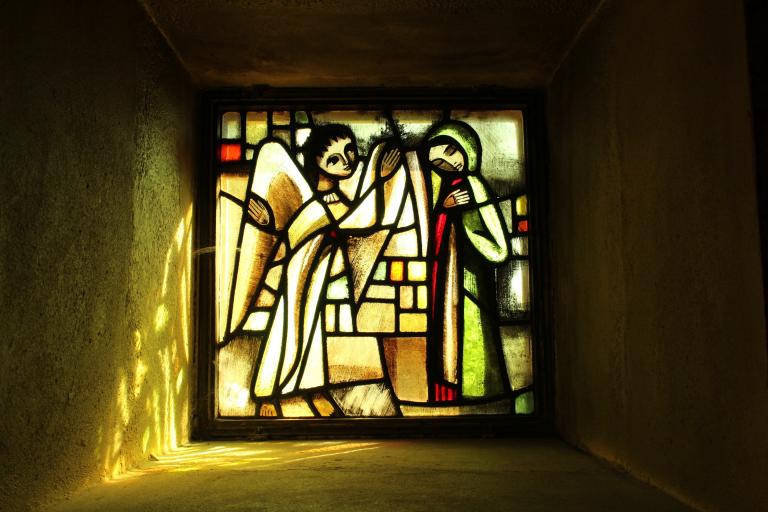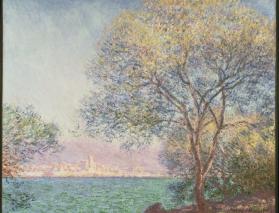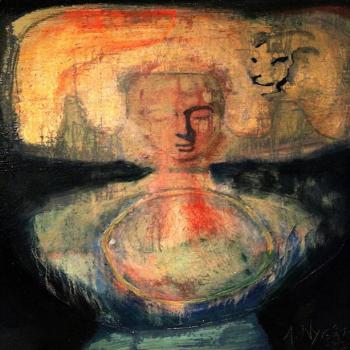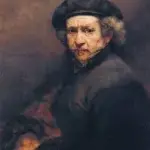
Have you ever felt the presence of God in your life? For most of us, this happens in one of a few ways, usually through an event or mechanism that opens up our senses. We have a sudden awareness that there is something greater inside us and/or around us, a supreme force or energy that is the very essence of life.
This trigger can be nature, the sublime feeling you get when you walk along a wooded path, gaze up through the sunlight at the trees and sense a divine presence. It can happen during periods of prayer or meditation when you realize that the essence of the divine is all around you, even in the air you breathe. It can even happen while you’re lying in bed during the early morning hours and a feeling of immense love or gratitude washes over you.
Yet, these moments can be few and far between and seem arbitrary, often popping up when we least expect them. Which is why I was intrigued by the two very different ways to sense God that follow, both requiring some activity on your part. You might say they involve going out to meet God rather than waiting for God to come to you.
Way #1. Contemplating Sacred Images.
If you’ve tried various meditation techniques, you’ll know that during some meditations, you’re instructed to leave your eyes open. You’re asked to focus your attention, with a soft gaze, on an object in the distance, something within your field of vision.
Contemplating a sacred image works the same way. It involves focusing on an image, but in this case an item with some spiritual significance to you. It could be a painting of the Madonna or Jesus, a small statue of the Buddha, or even a non-religious item like an inspiring painting, for example the painting below, Morning at Antebes by Monet, via the Philadelphia Museum of Art online.
The guidance that follows comes from Teresa A. Blythe courtesy of spiritual author Richard Rohr, who puts out a weekly newsletter from his Center for Action and Contemplation in New Mexico. It’s presented below in a lightly edited form. Like meditation, a 20-minute session is suggested. Blythe tells us that:
When our intention is to seek God’s presence, one effective mode of prayer is gazing at an object as a window to the unseen God—be it a traditional religious icon or an object we’ve chosen because of its meaning for us. Simply looking, without assigning any particular interpretation or meaning to the object of your gaze, can take you deep into contemplative awareness of God.
The goal is to look at the item/painting/photograph in front of you as “a window to God” and as you gaze at it, to “seek God’s presence.” As with any meditation, start by making sure you’re comfortably seated in a quiet setting and begin by focusing attention on your breath. Then:
- Turn your gaze at your chosen icon.
- Express your intention to encounter God and ask for guidance.
- Allow your mind to descend deep into the center of your heart, where you will encounter the presence of God. Spend a few moments pondering this and try allowing it to happen.
- Gaze at the icon. Let your gaze be long and loving. Think of the icon as a mystical window in which you are on one side and God is on the other.
- Allow God to communicate with you by way of this image, but do not become anxious about how or when God may communicate.
- Continue to gaze and allow your heart to become still and open.
- End the contemplation with a prayer of gratitude. Then, spend a few minutes reflecting on your experience.
Way #2. Sensing the Muse.
While there have been several entities known as muses throughout history, the best known are the inspirational goddesses of Greek mythology. There were nine muses in total, all the daughters of Zeus, and they were relied on to provide both inspiration and ideas in science and the arts including music, poetry and dance.
Lee Siegel, writing in The Wall Street Journal, tells us that that muse was used “to create new insights and new artistic forms. She was effectively invisible, a gust of divine wind that blew through the human vessel lucky enough to be graced by her attention.” Those who weren’t so lucky to be graced by the presence of the muse often were bereft of ideas or direction.
Writers and artists today still talk of the muse gracing their presence during moments of inspiration. But could this muse not be a series of goddesses but a single God figure, male or female? This idea was recently put forth by the 30-something spiritual and psychedelic explorer Erik Godsey who puts out a weekly newsletter called Feasting Friday. Godsey writes:
Some people find God in church, or nature; some find god in a lover’s embrace, or the psychedelic space. For me, I know God through the Muse, and she comes to me through my work.
For Godsey, the Muse (yes, he capitalizes her name, to give her the status she deserves) is the gateway to God and his relationship with Her is a sensual one. The “divine wind” does not just blow through Godsey, as he writes, she sits with him, both cajoling and inspiring. He explains:
I feel her wrapped around me as I type the just right word, cooing in my hear because I listen. She hunches over my shoulder as I read, excitedly pointing out the ideas I should keep and refine. She sits beside me as I listen to people’s stories, gently handing me the thread of their tapestry to pull on to free their inner child.
When he explains the effect the Muse has on him, it makes you wonder if his Muse wouldn’t be another person’s God. Perhaps they are one and the same, an idea that he hints at. Godsey continues:
Through her, I at times can touch the sacred, the transcendent…all our suffering, all our woe, our trauma, and our pain — are instantly made beautiful, sacred, holy — for every moment of our past has perfectly led us to this room, and the beauty, the perfection, the awe is so astounding, all we can manage are tears, giggles, and clumsy ‘thank you’s. In this room is God.
If you write or paint or knit or engage in any creative act, including dancing around the room by yourself, you can invite the Muse into your life. I don’t doubt that even while doing a sink full of dishes, the Muse can step in to assist you with the task at hand. This presence, which we can perceive as God, is always there, just beyond the veil of everyday life, patiently waiting for your recognition.


















